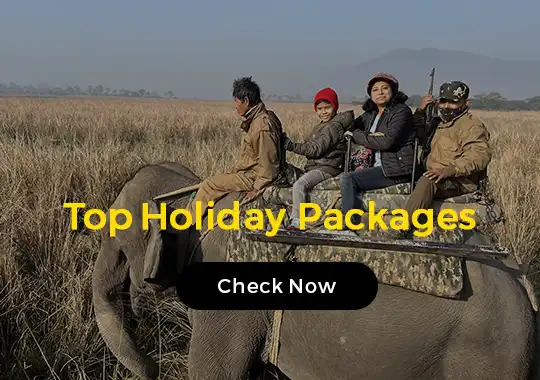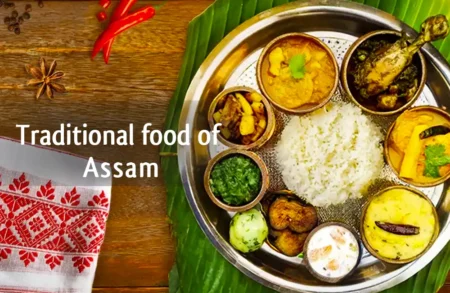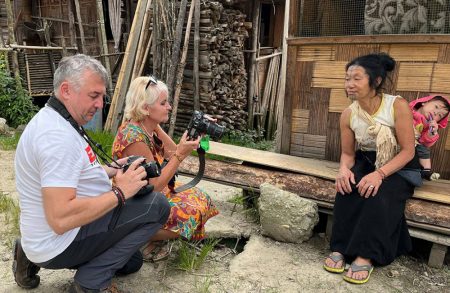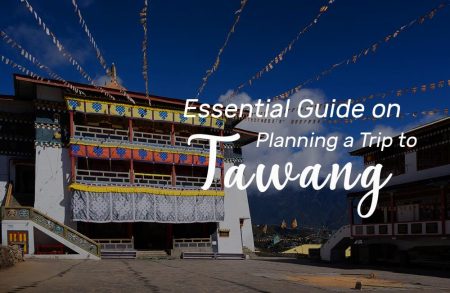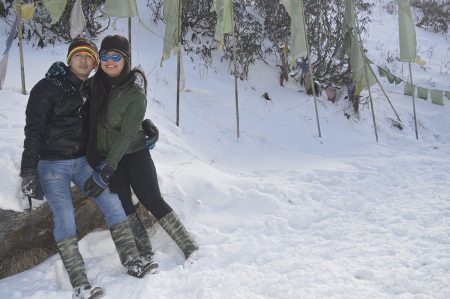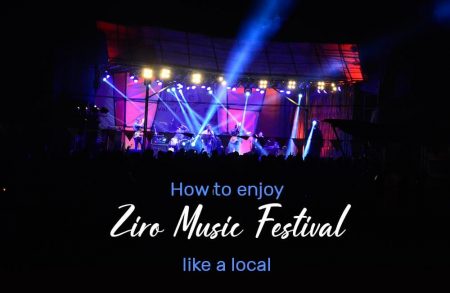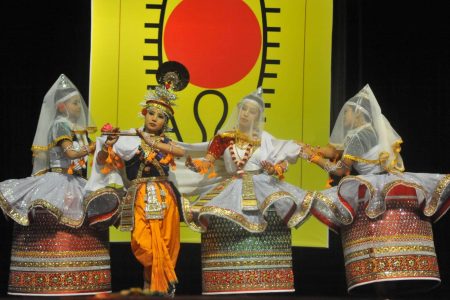North-East India is the land of colourful tribes, and dance and music flow in the hearts of everybody. It is blessed with nature’s pure bliss, indigenous culture and heritage. All states in the Northeast celebrate different festivals throughout the year. The vibrant festivals of Northeast India showcase the region’s diverse culture, rich traditions, and deep-rooted heritage. Known for their colourful festivities, these celebrations offer a unique glimpse into the tribal and cultural life of the seven sister states. Among all the wonderful festivals celebrated in North East India, a few famous ones are mentioned below:
1. Rangali Bihu

Celebrated on the Assamese New Year’s Day on the 14th of April, this festival heralds the arrival of spring. It is one of the best festivals in Northeast India. This festival lasts for 7 days. On the first day, Garu Bihu is celebrated, and on the 2nd day, Manuh Bihu is celebrated. Men and women perform Husari and celebrate the whole week. People enjoy various dishes made from rice and Jalpan during this festival.
Cultural festivals and dance competitions are going on for the whole month in different places in Assam.
- Significance: Assamese New Year
- When: Between April 13th and April 15th
- Where: Assam
2. Hornbill Festival

Celebrated every year from the 1st to the 10th of December, the Hornbill Festival is one of the grandest cultural events in Northeast India. Popularly known as the “Festival of Festivals,” it brings together all the major tribes of Nagaland to showcase their unique traditions, rituals, and vibrant way of life. All major tribes and ethenic groups of the Northeastern states also take part in this festival. Visitors can experience colourful tribal dances, traditional music, folk songs, indigenous sports, and vibrant attire that reflect the rich Naga heritage.
Handicraft exhibitions, various sports competitions, art displays, and food stalls serving authentic Naga cuisine add charm to the festival. In the evenings, modern attractions like Hornbill rock concerts and fashion shows keep the festive spirit alive, making it a blend of tradition and modernity. The festival not only celebrates cultural diversity but also promotes unity among the tribes of Nagaland.
Significance: Celebrates and promotes Naga heritage and culture
When: December 1st to December 10th
Where: Kisama Heritage Village, Kohima, Nagaland
We have some of the best itineraries covering the Hornbill Festival. Contact us to plan your Northeast Festival tour today!
3. Sangai Festival
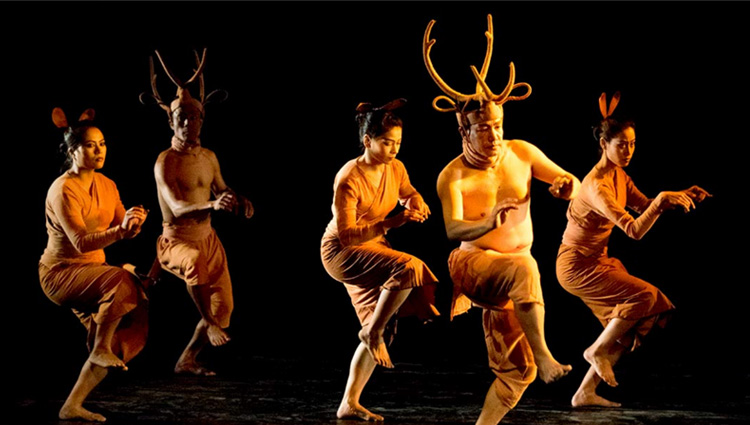
Celebrated every year in the last ten days of November, the Sangai Festival is the biggest cultural festival of Manipur. Named after the rare and graceful Sangai deer, found only in Manipur’s Keibul Lamjao National Park, this festival showcases the state’s rich cultural heritage, dance, music, crafts, and cuisine. Tourists can witness the famous Manipuri dance forms, indigenous sports like polo (believed to have originated in Manipur), and traditional martial arts performances. The festival also features handloom and handicraft exhibitions, adventure activities, and food fairs where visitors can taste authentic Manipuri dishes. The Sangai Festival is not just a celebration of art and culture but also a tribute to the natural beauty and biodiversity of Manipur.
Significance: Showcases Manipur’s rich culture and promotes the conservation of the Sangai deer
When: Annually in the last 10 days of November
Where: Various venues across Manipur, mainly in Imphal
4. Losar Festival

Losar, the Tibetan New Year, is one of the most vibrant and cherished festivals celebrated by Tibetan communities around the world. It is celebrated in Tawang in Arunachal Pradesh. Rooted in ancient traditions, Losar marks the end of the harsh winter season and the beginning of a new year filled with hope, prosperity, and happiness.
The preparations for Losar begin well in advance, as families clean their homes to ward off evil spirits and invite positivity. Homes are decorated with traditional symbols, colorful flags, and offerings for deities. Monasteries come alive with vibrant Cham dances (masked dances) performed by monks in colorful attire. These dances depict tales of good triumphing over evil and invoke blessings for the year ahead.
Another highlight is the hoisting of prayer flags, which flutter in the wind, spreading peace and goodwill. Villages and towns light up with festivities, and locals don their best traditional attire, including colorful gowns and ornaments.
When and Where
- When: Losar falls in either February or March, depending on the Tibetan lunar calendar.
- Where: Celebrated across Tibetan Buddhist regions, with major festivities in Ladakh, Dharamshala, Tawang, Sikkim, and parts of Bhutan.
- Significance: New Year for Monpas and Tibet, festival of prosperity
Check our recent blog road trip to Tawang from Guwahati.
5. Aoleang Festival


The Aoleang Festival is one of the most vibrant and significant celebrations of the Konyak tribe of Nagaland. Observed every year in the first week of April, this festival marks the arrival of spring and the start of a new year for the Konyak community. It’s a time for the Konyak people to thank their deities for blessings, pray for a bountiful harvest, and prepare for the agricultural cycle ahead.
The festival is a visual feast with folk dances, traditional songs, and rhythmic drumming that reflect the Konyak way of life. various games are also held during this festival. These performances are often accompanied by the blowing of buffalo horns and the chanting of ancient tribal prayers.
Whether you’re a culture enthusiast, a photographer, or simply a curious traveller, this festival is sure to leave you enchanted. Want to explore more about the Konyak tribe of Nagaland? Read our guide on Konyak headhunters of Nagaland.
- Significance – Denotes end of sowing season
- When – April 1 to April 10
- Where – The festival is celebrated across villages in the Mon district, with Longwa and Mon Town being popular places to experience the grandeur of Aoleang.
Check our Nagaland tour packages to plan to visit Nagaland during Aoleang Monyü festival.
6. Mopin

Mopin Festival is one of the most colorful and joyous celebrations of the Galo tribe in Arunachal Pradesh. Celebrated annually in April, this harvest festival marks the arrival of prosperity, good health, and a bountiful harvest. It is a time of community gathering, traditional rituals, and cultural performances, making it a vibrant spectacle for anyone lucky enough to witness it. The highlight of Mopin Festival is the smearing of rice flour (Etting) on each other’s faces as a symbol of purity, peace, and prosperity. This act also represents unity within the community.
The Galo people wear their finest traditional clothing during Mopin. The men sport coats and headgear made from animal fur, while women wear intricately woven skirts and beaded necklaces. The entire village is decorated with bamboo structures, colorful flags, and symbols of prosperity. It is one of the best festivals in Northeast India if you are interested in the culture and traditions of different tribes.
When and Where
- When: The Mopin Festival is celebrated in the first week of April every year.
- Where: It is primarily observed in the Galo-dominated regions of Arunachal Pradesh, with major celebrations in Basar, Along (Aalo), and Itanagar.
- Significance: Harvest festival
Curious to know more about festivals in Arunachal Pradesh ! We help you to plan your Arunachal Pradesh tour during Mopin festival.
7. Myoko Festival

The Myoko Festival is one of the most vibrant and significant festivals celebrated by the Apatani tribe in the Ziro Valley of Arunachal Pradesh. This unique festival, observed in the whole month of March, is a time to strengthen social bonds, seek blessings for fertility and prosperity, and honor the tribal traditions passed down through generations. It is dedicated to the village deity, Ayu Danyi, and other spirits, seeking their blessings for a bountiful harvest, good health, and strong bonds within the community.
Myoko also serves as a platform to reinforce friendship and unity among the Apatani villages. Each year, one village is chosen to host the festival, and the hosting responsibilities rotate among the Apatani villages in a traditional cycle.
The festival comes alive with energetic traditional dances and melodious folk songs performed by men and women dressed in colorful Apatani attire. These performances often narrate stories of tribal legends, nature, and communal harmony.
When and Where
- When: The Myoko Festival is celebrated annually in March.
- Where: The festival is primarily observed in the Ziro Valley, a UNESCO World Heritage Site in Arunachal Pradesh.
Planning a visit to Ziro Valley? Don’t miss out on the Myoko Festival and other cultural highlights of this picturesque destination. Read our full guide to Ziro Valley to plan your trip!
8. Shad Suk Mynsiem

Shad Suk Mynsiem is one of the most vibrant and sacred festivals celebrated by the Khasi tribe of Meghalaya. Rooted in the matrilineal traditions and agricultural heritage of the Khasi community, this spring festival is a tribute to nature, marking the end of the sowing season and offering prayers for a bountiful harvest. Unmarried women take part in this dance and men dance around them in circles. This is celebrated by the Khasi tribal community in Shillong. Festivities go on for three days.
Celebrated with traditional dances, rituals, and joyous gatherings, Shad Suk Mynsiem is a unique cultural experience that reflects the harmony between nature, spirituality, and human life.
The festival spans over three days and takes place in April, typically in Shillong, the capital of Meghalaya. The festival begins with prayers and offerings to U Blei Nongthaw (the Creator) and Ka Mei Ram-ew (the Earth Mother). These rituals invoke blessings for the community and the land.
When and Where
- When: The festival is celebrated annually in April, marking the start of the Khasi New Year.
- Where: The primary celebration takes place at the Weiking Ground in Shillong, but similar events are observed in Khasi-dominated villages across Meghalaya.
Visiting Meghalaya during Shad Suk Mynsiem offers a rare glimpse into the rich cultural heritage of the Khasi tribe. The festival is a harmonious blend of spiritual rituals, vibrant performances, and a celebration of unity. It’s an unforgettable experience that connects visitors to the essence of Khasi culture and their reverence for nature.
9. Behdeinkhlam

The Behdeinkhlam Festival is one of the most vibrant and spiritually significant festivals celebrated by the Pnar tribe of the Jaintia Hills in Meghalaya. This is a four-day-long religious festival, celebrated by people belonging to the faith of “KaNiamTre”. Held annually in July after the sowing season, this festival is a ritualistic prayer to the divine forces for a bountiful harvest, protection from diseases, and the well-being of the community.
The name “Behdeinkhlam” translates to “chasing away the plague,” and the festival is a colorful amalgamation of faith, traditional rituals, and joyful community participation. This festival includes offering food to the ancestors of NiamTre and fetching a sacred log of wood. At this festival people wear their traditional clothing, adorned with colorful fabrics, ornaments, and headgear, adding to the festival’s visual appeal. Traditional drumbeats, flutes, and chants fill the air, creating an atmosphere of joy and devotion. Group dances and songs reflect the community’s shared values and heritage.
- Significance: Festivities end when the Raths are immersed in water
- When: The Behdeinkhlam Festival is celebrated annually in July, just before the harvest season.
- Where: Jowai, Meghalaya
10. Kang Chingba(Rath Yatra)

Kang Chingba, the Rath Yatra of Manipur, is one of the most important festivals celebrated by the Meitei community, especially the followers of Vaishnavism in the state. This annual festival, held in the month of July, is dedicated to Lord Jagannath, along with his siblings Balabhadra and Subhadra. Much like the famous Rath Yatra of Puri in Odisha, Kang Chingba is marked by grand processions, traditional rituals, and immense devotion. The grandest celebrations occur at Shree Govindajee Temple in Imphal, but the festival is also observed in other parts of Manipur with Vaishnav temples.
The name “Kang” refers to the chariot or rath, and “Chingba” means to pull—symbolizing the pulling of the deity’s chariot by devotees as a gesture of devotion.
- Significance – Exactly similar JagannathRathYatra Festival in Odisha
- When – July
- Where – The grandest celebrations occur at Shree Govindajee Temple in Imphal, but the festival is also observed in other parts of Manipur with Vaishnav temples.
11. Kharchi Puja

Kharchi Puja is one of the most vibrant and significant festivals of Tripura, celebrated in honor of the Fourteen Gods worshipped by the Indigenous communities of the state. It is celebrated for 7 days. This grand festival, held annually in July, is a unique blend of tribal customs and Hindu rituals, making it a fascinating cultural spectacle. According to legend, the festival originated as a ritual to cleanse the earth and wash away sins after the Ambubachi Mela, when the land was believed to be impure.
The word “Kharchi” comes from the Kokborok language, meaning “earth”, symbolizing the purification of the land and deities. The festival is deeply rooted in the ancient traditions of Tripura’s Manikya dynasty, reflecting the rich heritage of the region.
- Significance – This very religious festival is accompanied by large fairs
- When – July/August
- Where – Chaturdasha Devta Temple, Old Agartala, Tripura
12. Torgya

This is a 3 day long monastic festival, celebrated with lots of colours in Tawang monastery of Arunachal Pradesh. Monks perform sacred dances wearing face masks and colourful costumes as they celebrate this festival to usher in peace and prosperity.
- Significance – Chham, the sacred dance of select monks is the specialty of this festival
- When – 28th day of 11th month in the lunar calendar (usually January)
- Where – Tawang Monastery, Arunachal Pradesh
Apart from these few other famous festivals celebrated in Northeastern states of India are –
- Hornbill Festival, Nagaland: Dubbed the “Festival of Festivals,” this grand event celebrates the traditions, music, and dance of the Naga tribes. Held in December, it draws visitors from around the world.
- Sangai Festival, Manipur: Celebrated in November, this festival showcases Manipuri culture through traditional dances, art exhibitions, cuisine, and adventure sports. It is named after the Sangai deer, Manipur’s state animal.
- Ambubachi Mela, Assam: Held at the famous Kamakhya Temple in Guwahati, this spiritual festival in June celebrates the divine feminine power and attracts pilgrims from across the country.
- Ziro Music Festival, Arunachal Pradesh: Held in the picturesque Ziro Valley, this four-day festival is a paradise for music lovers, blending nature with live music performances.
- Losar Festival, Sikkim: Celebrating the Tibetan New Year, Losar features prayers, cultural performances, and rituals at monasteries.
- Raas Lila in Manipur and Assam: Raas Leela in Manipur is a mesmerizing classical dance-drama that depicts the divine love story of Lord Krishna and Radha, performed with graceful movements and soulful music. Rooted in Vaishnavism, this sacred dance form is an integral part of Manipuri culture, especially showcased during Janmashtami and Holi at temples like Shree Govindajee Temple in Imphal.
If you want to explore the culture and tribal life of Northeast India check our tribal tour packages or write to us to create a customized tour for you.
Like It! Pin It!




